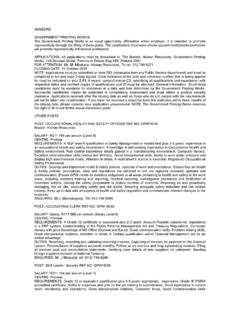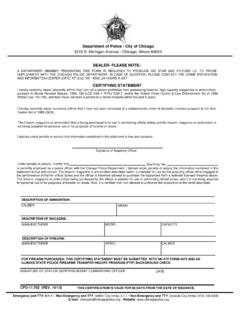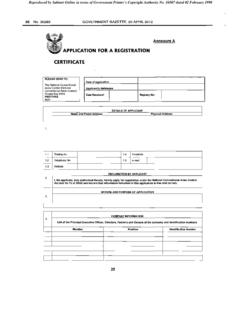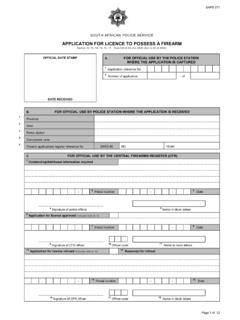Transcription of IN THE HIGH COURT OF SOUTH AFRICA - SAFLII Home
1 IN THE high COURT OF SOUTH AFRICASOUTH GAUTENG high COURTJOHANNESBURGCASE No. A452/09 REPORTABLE In the appeal between:EMMANUEL MUKWEVHO AppellantDELETE WHICHEVER IS NOT APPLICABLE(1)REPORTABLE: YES / NO(2)OF INTEREST TO OTHER JUDGES: YES / NO(3)REVISED.. DATE SIGNATUREandTHE STATE_____JUDGMENT_____WILLIS J: [1] The appellant appeals against conviction, but not sentence, with the leave of the COURT a quo. Obviously, if the appeal against conviction succeeds, the sentence falls away. The appellant was arraigned before the Regional COURT in Soweto. He was charged with one count of unlawful possession of a firearm and a further count of unlawful possession of ammunition. Count one (the count of unlawful possession of a firearm ) reads as follows:POSSESSION OF A FIREARMThat the accused is guilty of the offence of contravening the provisions of Section 3 read with Sections 1, 103, 117, 120(1) (a), Section 121 read with Schedule 4 and Section 151 of the Firearms control Act, No.
2 60 of 2000, and further read with Section 250 of the Criminal Procedure Act, No. 51 of 1977- Possession of a firearm (read with Section 51 of the Criminal Law Amendment Act, No. 105 of 1997)In that on or about 07/04/2008 and at or near Kempton Park in the Regional Division of Gauteng, the accused did 2unlawfully have in his possession of the following firearm , to wit 9mm Parabellum Calibre Norinco Model 201 C Semi-automatic without holding a licence, permit or authorization issued in terms of the Act to possess that two (the count of unlawful possession of ammunition) reads as follows:POSSESSION OF AMMUNITIONThat the accused is guilty of the offence of contravening the provisions of Section 90 read with Sections 1, 103, 117, 120(1) (a), Section 121 read with Schedule 4 and Section 151 of the Firearms control Act, of 2000, and further read with Section 250 of the Criminal Procedure Act, No. 51 of 19977- Possession of ammunition (read with Section 51 of the Criminal Law Amendment Act, No.)
3 105 of 1997)In that on or about 07/04/2008 and at or near Kempton Park in the Regional Division of Gauteng, the accused did unlawfully have in his ammunition (sic - the word possession was omitted) to wit 4 (9mm) cartridges without being the holder of(a)a licence in respect of a firearm capable of discharging that ammunition;(b) permit to possess ammunition;(c)a dealer s licence, manufacturer s licence, gunsmith s licence, import, export or in-transit permit or transporter s permit issued in terms of this Act;(d)or is otherwise authorized to do appellant, who had the benefit of an advocate representing him, pleaded not guilty in respect of both counts. The appellant s counsel advised in respect of the plea explanation given at the beginning of the 3trial that the appellant will exercise his constitutional right to remain silent . The appellant was convicted on both counts on 5 January 2009.
4 In terms of section 51 (2) (a) (i) of the Criminal Law Amendment Act, No 105 of 1997, read with part II of Schedule 2 thereof, a first offender (as the appellant indeed was) who is convicted of possession of a semi-automatic firearm is liable to be sentenced to a minimum of 15 years imprisonment, unless, in terms of section 51(3) thereof the COURT is satisfied that substantial and compelling circumstances exist which justify the imposition of a lesser sentence . On the same day as conviction, the learned magistrate imposed a sentence of 15 years imprisonment in respect of count one and five years in respect of count two. He ordered the sentences to run concurrently. The effective sentence is therefore 15 years. It may be appropriate to mention at this stage that the appellant gave no evidence whatsoever in respect of either conviction or sentence. His counsel applied for a discharge in terms of section 174 of the Criminal Procedure Act, No.
5 51 of 1977, as amended. This application was dismissed. The appellant was 24 years of age at the time.[2] Constable Tshabalala testified that, acting on information, he and Sergeant Mujapiwe, who were on patrol at the time, went to the home of the accused in Kempton Park on 7 April 2008. The appellant was sleeping at the time. He was searched by Tshabalala and a firearm was found between his body and his trousers. There was no holster. Tshabalala asked the appellant if he had a licence to posses this firearm but the appellant failed to produce any such licence. In the firearm were four rounds of ammunition. Having confiscated the firearm and arrested the appellant, Constable Tshabalala put the firearm and ammunition in a sealed plastic bag and booked it in the SAP 13 (the register of items seized by the police during investigations). The SAP 13 number of the entry was 307/08. The forensic bag s number was written in his diary or pocket book.
6 He says this number was not recorded elsewhere (this appears to mean 4that the forensic bag number was not recorded in the SAP 13). The docket has no record of the seal number of the forensic bag. The serial number of the firearm was recorded by him in the SAP 14 and his diary. Neither the SAP 14 nor the diary was not produced in evidence. No evidence was led as what either the SAP 13 or SAP 14 are or were. The SAP 13 is common knowledge to this COURT at least and, in any event, one can infer what it is from the evidence. Constable Tshabalala describes the firearm as a Lorinco whereas the charge sheet refers to a Norinco . The difference may not be a mere error of spelling or pronunciation. As far as I have been able to ascertain, a Lorinco is a different type of firearm from a Norinco. This difference, as will appear more fully later on, may not be unimportant.[3] Sergeant Mujapiwe confirmed the evidence of Constable Tshabalala.
7 Constable Majela confirmed that a 9mm Lorinco pistol with cartridges had been booked in the SAP 13 under number 307/08. These were in a sealed forensic bag. The sealed forensic bag had number FSE340218. Constable Majela refreshed his memory from his statement. The serial number of the firearm was recorded as 49108772. According to Majela, this serial number was written in the SAP 13 . He took the sealed bag to the forensics laboratory and there he handed it over. Majela says that the seal number of the forensic bag was recorded in the SAP 13 (this is contrary to the evidence of Tshabalala).[4] The report of the forensic ballistics expert Cindy Maria Silva Bekarees was handed in terms of section 212 of the Criminal Procedure Act. She confirms that she opened this sealed bag, that it contained a firearm having this serial number as well as the cartridges.
8 She described the firearm as a 9 mm Parabellum Calibre Lorinco 201 C semi-automatic pistol . The State then closed its case. As has been recorded above, the appellant then unsuccessfully 5applied for a discharge. Thereafter, he closed his case without leading any evidence.[5] In section 1 of the Firearms control Act, of 2000, semi-automatic is defined as meaning self-loading but not capable of discharging more than one shot with a single depression of the trigger . No evidence was led in this regard. The appellant was at the risk of receiving a severe minimum sentence if convicted as charged. In S v Nziyane1 Botha J, with Du Plessis J concurring, held, when referring to the provisions of section 51 of the Criminal Law Amendment Act, No. 105 of 1997, insofar as they relate to the minimum sentence for possession of an unlicensed semi-automatic firearm , that:Die woorde dra na my mening die betekenis oor die feite wat aanwesig moet wees om die minimum vonnis verpligtend te maak by skulgigbevinding moet vassstaan in die sin dat dit inbegrepe moet wees in die feite waarop die skuldigbevinding gegrond other words, in order to attract the prescribed minimum sentence, all the necessary elements must be proven at the stage of conviction, including the fact that the weapon in question was a semi-automatic one.
9 In this case, questions arise not only whether the appellant was in unlicensed possession of a firearm and ammunition but also whether the firearm was the one described in the charge and whether it was a semi-automatic one. There is also the question of mens rea to which I shall refer separately at a later stage.[6] The sealed bag is indeed linked to the SAP 13 number 307/08, the entry made by Constable Tshabalala. None of the following were, however, tendered as evidence: the diary, the record of the SAP 13 entries or the SAP 14 . There was no explanation for the absence. Not even copies thereof were produced to the COURT a quo. The content of 1 [2000] 2 All SA 391 (T) at 394j-3295a6these documents was directly in issue. In the absence of an acceptable explanation for the unavailability of the original document, no evidence is ordinarily admissible to prove the contents thereof except the original document This is the so-called best evidence rule.
10 This rule has not escaped criticism as a relic from the Dark Ages, before the advent of photocopying Nevertheless, in my opinion, in the absence of a suitable explanation these documents should have been produced in order for the defence to cross-examine to test the veracity and accuracy of the information allegedly recorded therein, more especially as there are differences between Tshabalala and Majela s evidence of what was recorded in those documents. [7] Furthermore, the learned magistrate disallowed the defence counsel s request that Tshabalala s allegedly inconsistent previous statement be handed in as an exhibit. He also disallowed the handing in of Constable Majela s statement. In my opinion, the learned magistrate erred in both respects. Then there is the issue that the charge alleges the firearm was a Norinco but the evidence was that it was a Lorinco and these may indeed be different kinds of See, for example R v Pelunsky 1914 AD 360; Ex parte Roche 1947 (3) SA 678 (D); R v Hodge 1949 (2) SA 323 (E); R v Halem 1949 (3) SA 274 (T); R v Van Der Merwe 1952 (1) SA 143 (SWA); R v Zungu 1953 (4) SA 660 (N) at 661-2; Mabena v Brakpan Municipality 1956 (1) SA 179 (T); R v Pierce 1956 (1) SA 183 (T); R v Nhlanhla 1960 (3) SA 568 (T); R v Gemeenskapsontwikkelingsraad v Williams & Others (1) 1977 (2) SA 692 (C ) at 698A; S v Omega Bearing Works (Edms) Bpk 1977 (3) SA 978 (O); S v Miles 1978 (3) SA 407 (N); Standard Merchant Bank v Rowe 1982 (4) SA 186 (T); Standard Merchant Bank v Creser 1982 (4) SA 671 (W) at 674B; Singh v Govender Brothers Construction 1986 (3) SA 613 (N); S v Ngesi 1986 (2) SA 244 (E) at 246D-E; D.
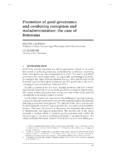
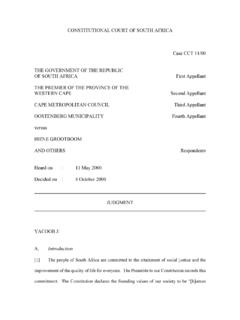
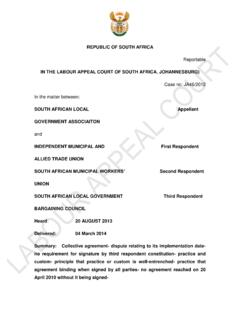
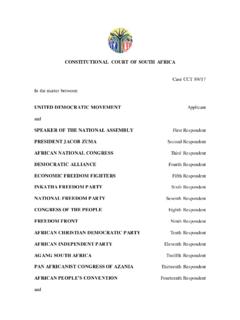
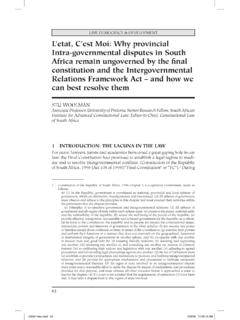
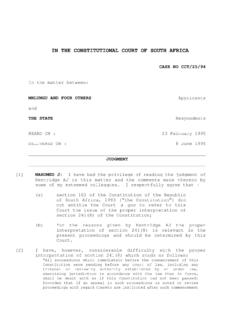
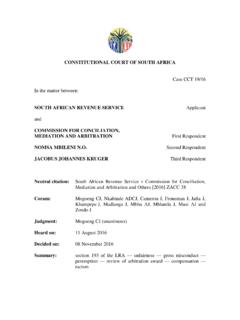
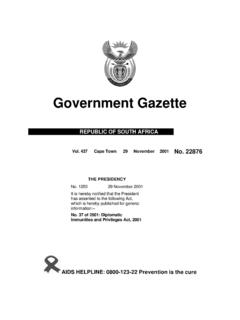
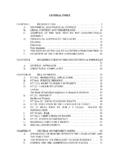
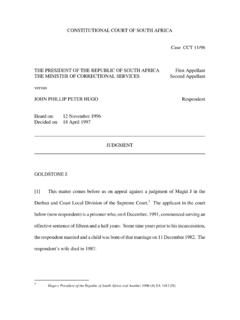
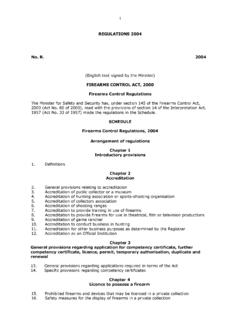
![Firearms Control Act [No. 60 of 2000] - SAFLII Home](/cache/preview/f/4/8/1/a/5/1/8/thumb-f481a5188d69107fa1c9a766b0302da4.jpg)

